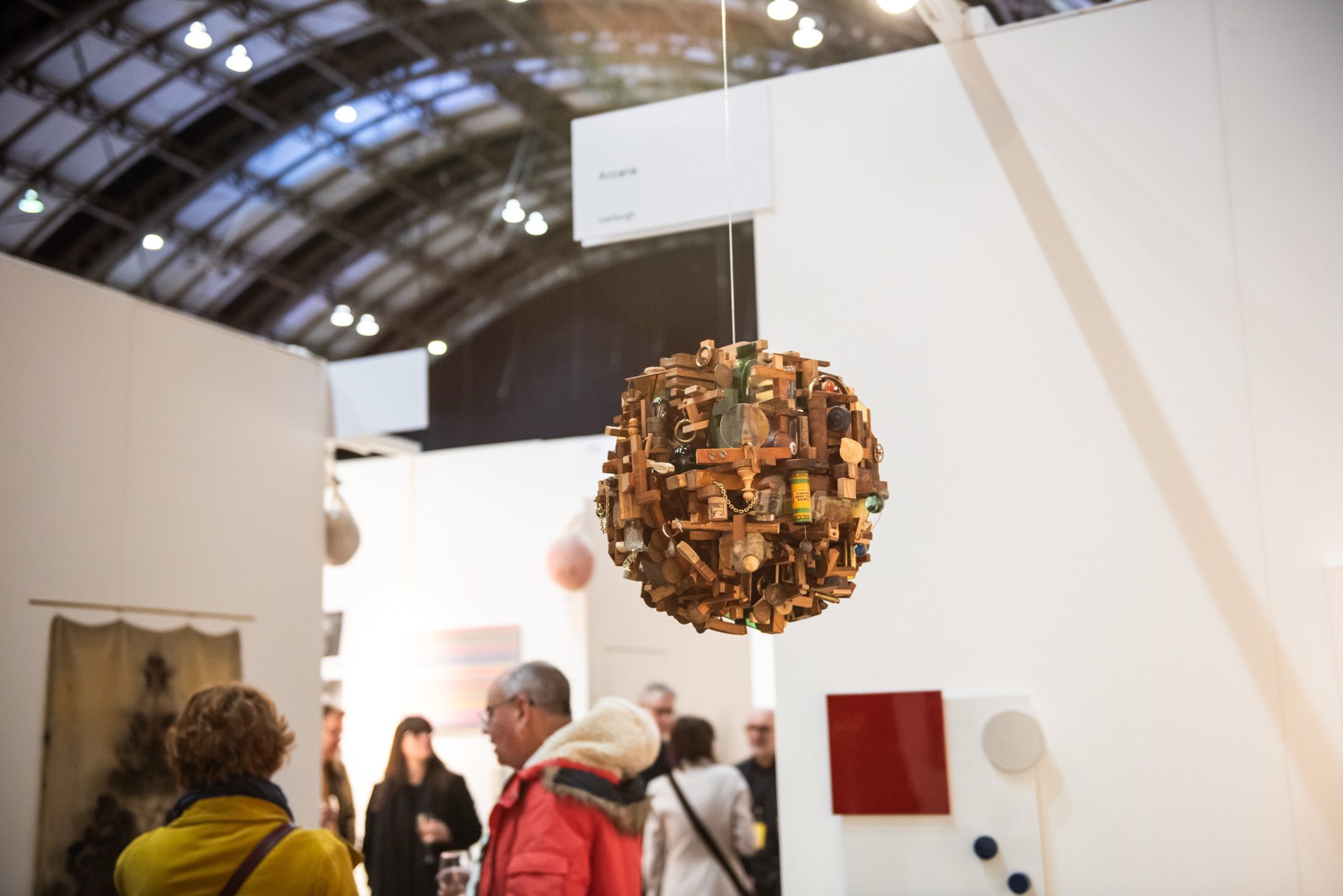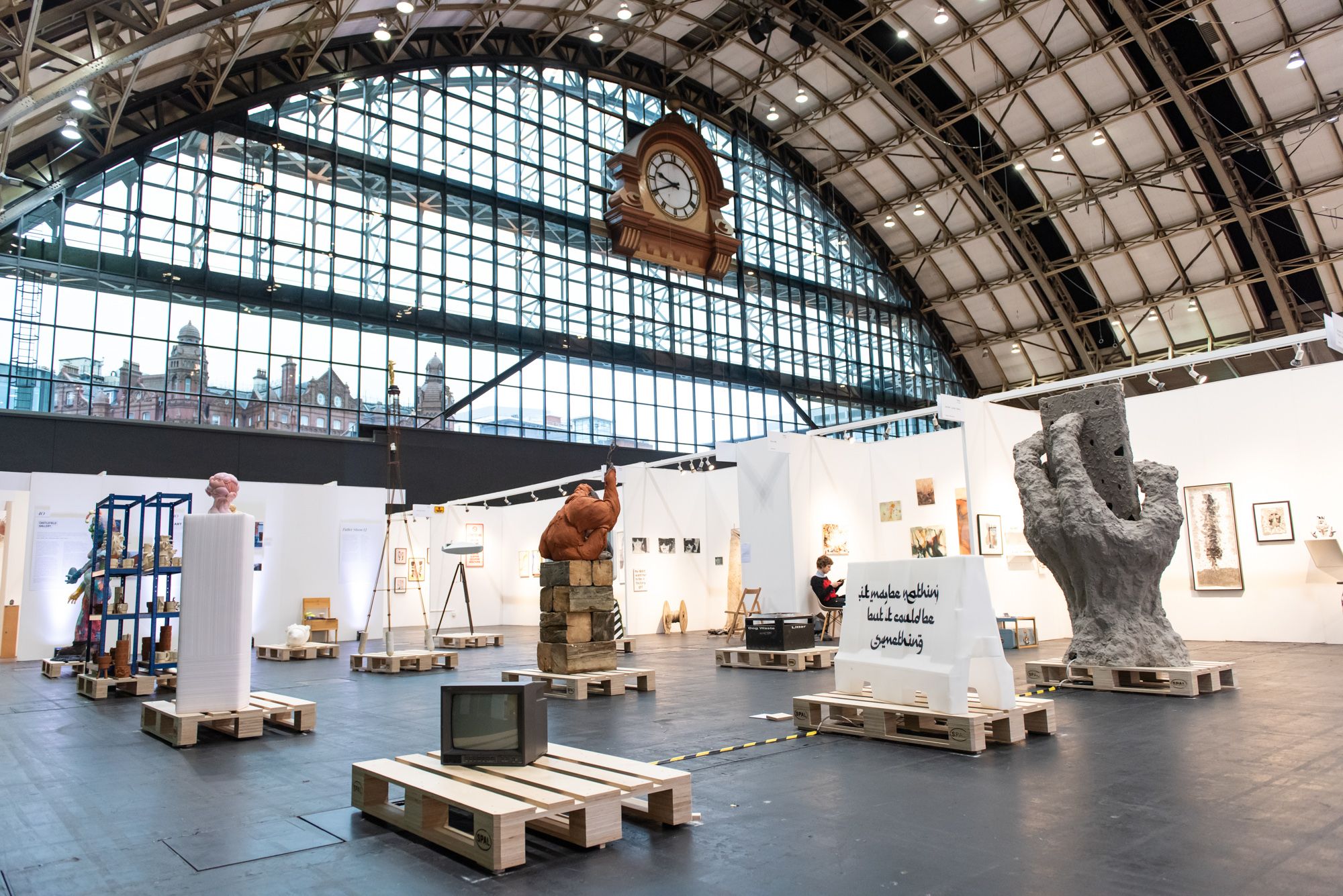The central sculpture pavilion at The Manchester Contemporary has, since 2021, been an area of exploration and investigation into Art’s inner workings, seeking to reveal or expose the lesser-known structures behind the ‘art world.’ Previous editions have looked at; Collections (in 2020) Alternative gallery spaces (2022), Art Logistics (2023) and this year we look at the Studio.
Looking at Art Fair People Looking at Art features 10 artists from ten selected disciplines to bring a part of their studio to the pavilion, an area to experiment, present and make art for the duration of the fair.
There are no expectations of the invited artists, who are both literally and metaphorically at the heart of the fair. Given the same brief, each artist was chosen according to discipline or their métier, to occupy a space over the three days of the fair and bring some element of their studios to engaging in any safe activity of making, performance, or discussion suitable for all audiences visiting The Manchester Contemporary.




)
)
)
)
)
)
)
)
)
)